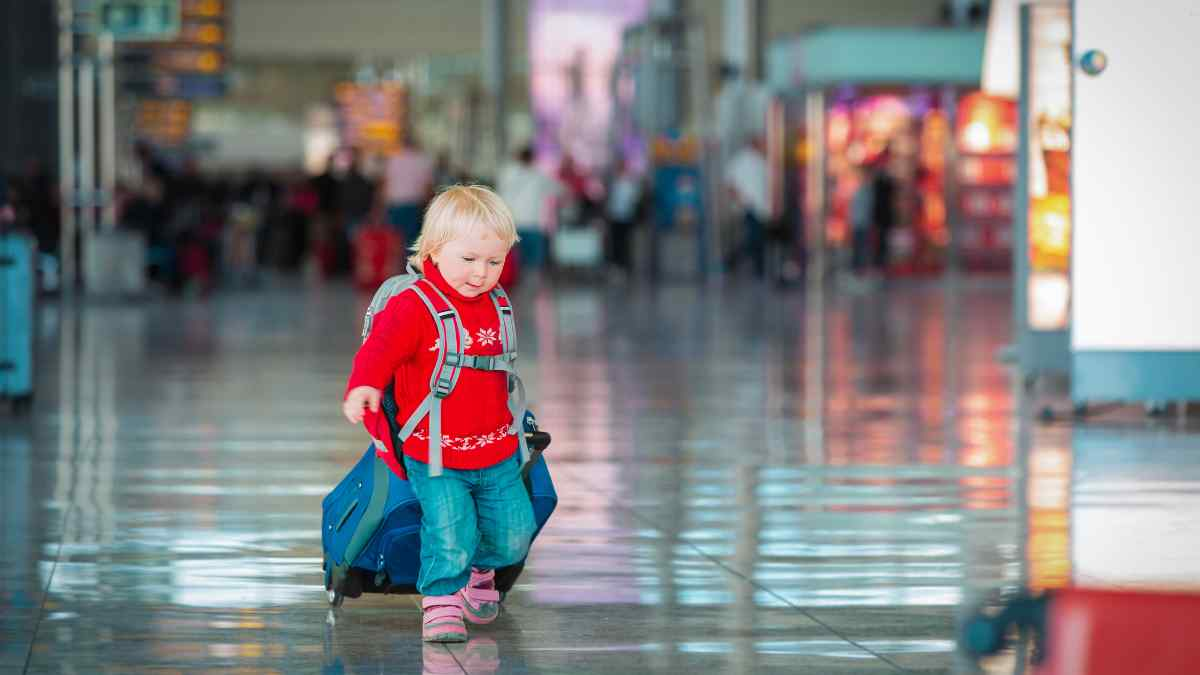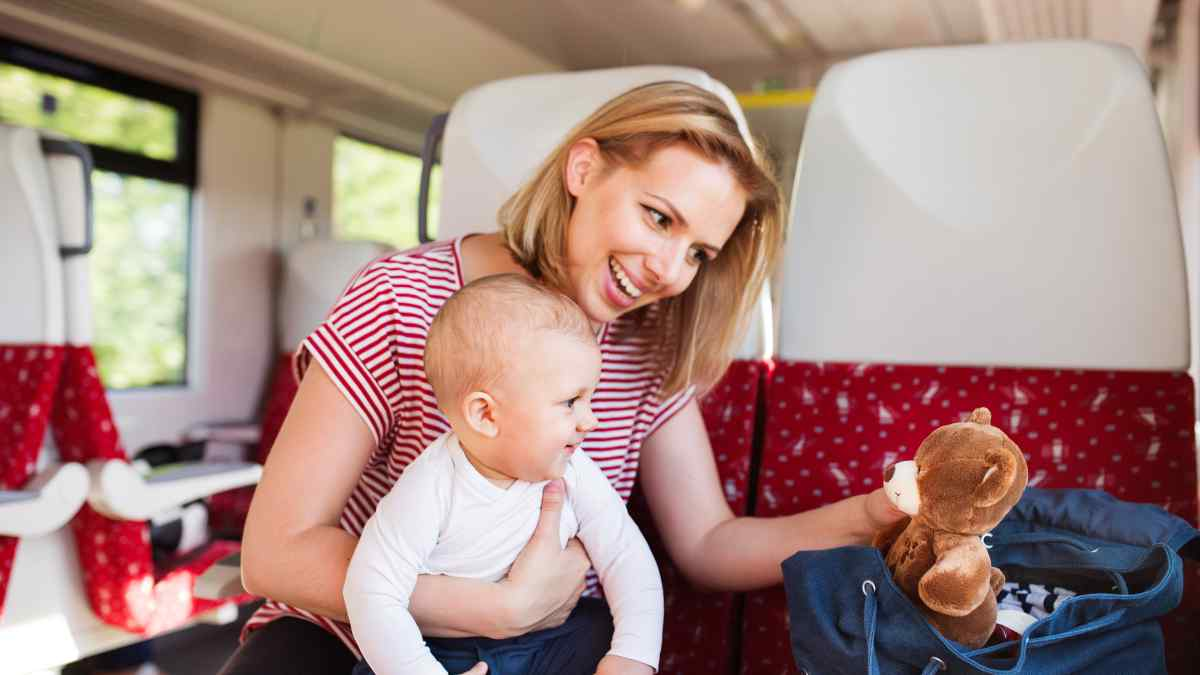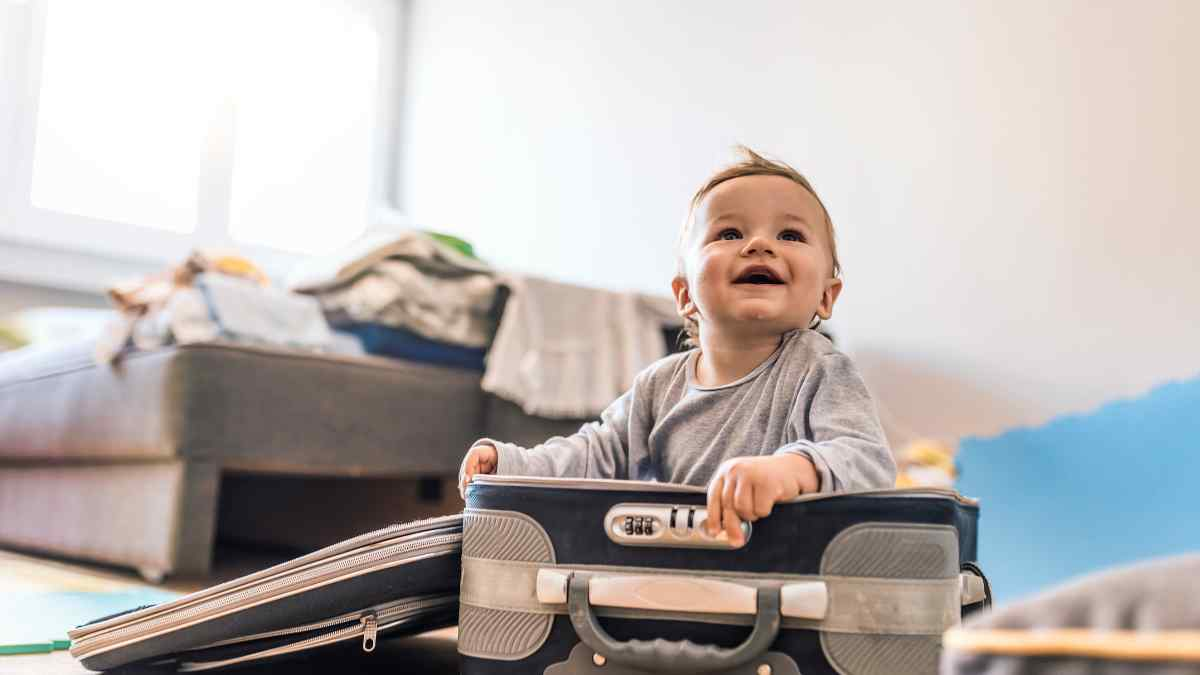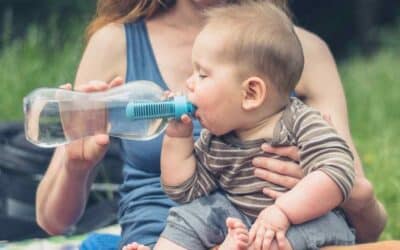Traveling with a baby is an adventure filled with joy, challenges, and countless memorable moments. As parents, while we relish the new experiences and sights that travel brings, ensuring our baby’s well-being remains a top priority. One of the most crucial aspects of this is hydration. Babies, with their delicate systems, have unique hydration needs that can be accentuated during travel.
Factors like changes in climate, the hustle and bustle of transit, and the disruptions to regular feeding routines can make it tricky to ensure they’re getting the fluids they need. This article delves into the importance of keeping your baby hydrated during travels, offering practical tips, insights, and solutions to common challenges. Whether you’re flying cross-country or embarking on a road trip, let’s ensure your little one stays quenched, content, and ready for the journey ahead.

Understanding Baby Hydration
Traveling is an exhilarating experience for the whole family. Whether it’s a long flight abroad or short trips in the country, every journey brings its set of challenges, especially when young kids are involved. One of the primary concerns that parents often grapple with is ensuring their babies and toddlers stay hydrated throughout the journey. Let’s dive deep into understanding baby hydration, a topic paramount for every traveling family.
How Much Water Do Babies Need Daily?
The hydration needs of babies differ from those of adults. For the first six months, breastfed babies get all the hydration they need from breast milk. It’s nature’s perfect baby food, supplying all the necessary nutrients and hydration. For those who opt for bottle feeding, infant formula also plays a pivotal role in meeting their daily water requirements. As young babies begin transitioning to solid foods around the 6-month mark, their need for supplemental water increases. However, it’s essential to remember that the little ones should not be given too much water, as their kidneys aren’t fully developed to handle large amounts. Always consult with a healthcare professional regarding the exact amount suitable for your child.
Signs of Dehydration in Babies: What to Look For
Dehydration can be a serious concern, especially when traveling in hot weather or when there’s a change in routine, like during air travel. Some warning signs to watch out for include:
- Dry lips and mouth
- Fewer wet diapers than usual
- Dark yellow urine
- Sunken eyes or soft spot on the head
- Irritability
- Lack of tears when crying
When on road trips, making regular rest stops to check on your baby and offer a feed can be beneficial. During air travel, the cabin pressure, coupled with the dry air, might lead to ear pain or motion sickness in older babies. Keeping them hydrated can help alleviate such discomforts.
The Role of Breast Milk and Formula in Hydration
Breast milk is a wonder fluid, adjusting its consistency based on the baby’s needs. In hotter climates, you might notice your milk supply becoming more watery, ensuring your baby stays hydrated. For parents using infant formula, it’s crucial to mix the formula milk with only bottled water while traveling abroad. Tap water, even in some hotel rooms, might not be safe for young kids. Always visually check bottled water to ensure its seal is intact and consider sterilising equipment for added safety precautions.
Travel Tips for Staying Hydrated
1. Pack Smartly: Always have easy access to bottled water and milk, whether you’re on a plane or in a car. For older babies who’ve started on solids, pack baby food that helps in hydration.
2. Sun Safety: Protect your child from direct sunlight, and don’t forget sun safety precautions to prevent dehydration.
3. Avoid Alcohol and Caffeine: If you’re breastfeeding, avoid alcohol and limit caffeine intake, as these can affect your milk supply.
4. Stay Prepared: Carry on essentials like an alcohol-based hand sanitizer, extra bottles, and a pain reliever suitable for babies. These can be lifesavers during long journeys.
5. Time Zones and Feeding: If you’re traveling across time zones, try to stick to your baby’s feeding routine as much as possible. Continue breastfeeding or bottle feeding as you would at home.

Pre-travel Preparations
Building on our understanding of baby hydration, it becomes evident that preparation is key. As families gear up for adventures abroad or within the country, taking extra time for pre-travel preparations can ensure that the little ones remain well-hydrated throughout the trip. Let’s delve into some pivotal tips and packing essentials for a smooth, hydrated journey with your young child.
Tips for Ensuring Your Baby is Well-hydrated Before Embarking on Your Journey:
1. Routine Feeding: Whether you’re breastfeeding or bottle feeding, ensure you stick to your baby’s regular feeding schedule in the days leading up to the trip. This establishes a rhythm and ensures their body is well-hydrated.
2. Introduce New Food Gradually: If you’re planning to introduce any new food during the trip, test it out a few days in advance. This will help you gauge if it aids hydration and how your child’s body reacts to it.
3. Limit Salty Foods: Too much salt can cause dehydration. If your toddler has started on solids, be wary of their salt intake.
4. Fresh Air: Take your baby out for short walks or playtime, ensuring they get fresh air. This helps in regulating their body functions and promotes better hydration.
Packing Essentials
1. Bottled Water: Always pack an ample supply of bottled water. It’s crucial, especially when traveling abroad, where tap water might not be safe for consumption. Remember to visually check bottled water seals to ensure they’re intact.
2. Sterilized Bottles: Sterilising equipment is essential to keep bottles free from harmful bacteria. If you’re staying in a hotel room, inquire in advance about facilities for sterilizing baby bottles.
3. Formula or Breast Milk Storage Solutions: If you’re using formula milk, pack enough to last the entire trip and a little extra. For mothers who are breastfeeding, consider your milk supply and, if necessary, carry storage solutions to store expressed breast milk.
4. Quick-access Feeding Gear: Ensure that bottles, formula, or breast milk are easily accessible, especially during plane or car journeys. This will make feedings smoother and ensure your baby remains hydrated.
Hydration Tips for Different Modes of Travel
Having delved into the essentials of pre-travel preparations and understanding the importance of keeping our little ones hydrated, it’s time to focus on the journey itself. Different modes of travel present unique challenges when it comes to ensuring our children stay hydrated. From the dry cabins of airplanes to the confined spaces of cars and buses, each mode requires specific attention. Here’s a detailed look at hydration tips tailored for various travel modes:
Air Travel
- The Dry Environment and Its Effects: Airplane cabins are notorious for their low humidity levels. This dry environment can accelerate dehydration, especially in infants whose bodies haven’t fully developed their hydration regulation systems. Always have bottled water on hand and encourage older babies to drink water periodically.
- Feeding During Takeoff and Landing: Feeding your baby during takeoff and landing serves a dual purpose. Not only does it help keep them hydrated, but the act of swallowing can also help alleviate the discomfort of changing cabin pressure, reducing the risk of motion sickness. If you’re breastfeeding, continue breastfeeding as you would at home. For bottle-fed infants, ensure you have a bottle ready in advance.
Road Trips
- Regular Stops for Feeding and Hydration: Road trips offer the flexibility of stopping as needed. Make regular stops to ensure your child is fed and hydrated. These breaks also provide an opportunity for the baby to get some fresh air and for the family to stretch their legs.
- Conducive Car Environment: Cars can become quite warm, especially during sunny days. Ensure that the car is well-ventilated, and consider using sunshades to protect the little one from direct sunlight. A comfortable environment encourages hydration, making it easier for the child to drink water or milk.
Train and Bus Journeys
- Comfortable Feeding Environment: Trains and buses can sometimes be crowded, making it challenging to feed your baby. Plan in advance by reserving seats, if possible, or finding a quiet corner where you can comfortably breastfeed or bottle-feed.
- Storing and Accessing Water and Milk/Formula: On longer journeys, having a storage solution for formula milk or expressed breast milk is crucial. Always keep bottled water within easy reach, and ensure that bottles are stored in a way that they’re easy to access and feed the baby.

Conclusion
From the hustle of packing bags to the thrill of exploring new destinations, traveling offers a kaleidoscope of experiences. But when journeying with our youngest family members, our responsibilities take on a new dimension. Hydration, as we’ve delved into throughout this article, stands out as a fundamental concern.
Every mode of travel presents its hydration challenges. Whether it’s the parched environment of an airplane or the unpredictability of road trips, staying vigilant about our baby’s hydration needs ensures their comfort and well-being. The tips and insights provided aim to equip parents with the knowledge and foresight to navigate these challenges effectively.
Remember, every journey is an opportunity for memories, growth, and bonding. By prioritizing hydration and being prepared, we set the stage for not just safe travels but joy-filled adventures. Here’s to exploring the world, with our little ones in tow, confident in the knowledge that we’re taking every step to keep them hydrated, healthy, and happy. Safe journeys to all families venturing near or far!
Did this article help? Please leave a comment down below; you can ask any questions you may have too.



